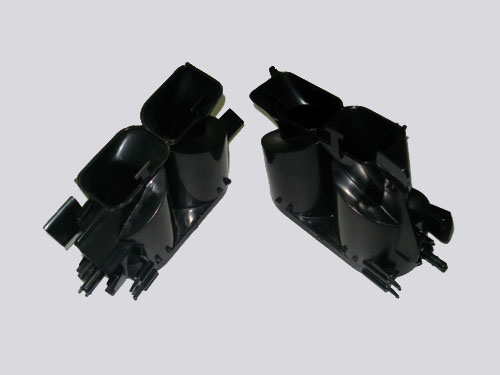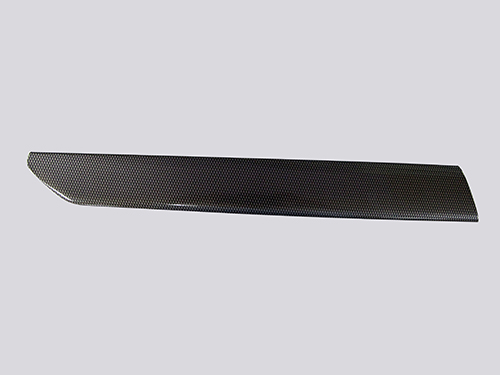The parameter Settings of injection molding process directly determine the quality of plastic parts (such as dimensional accuracy, surface quality, mechanical properties) and production efficiency. The core parameters can be divided into three major categories: temperature, pressure, and time. The influence and control logic of each category of parameters are as follows:
I. Temperature parameters: Determine the melting state and cooling effect of plastics
Temperature is one of the most crucial parameters in injection molding, directly affecting the plasticizing quality of plastics and the cooling and curing process. It mainly includes barrel temperature, nozzle temperature, and mold temperature.
Barrel temperature
Definition: The heating temperatures of each section of the barrel (typically divided into the feeding section, compression section, and metering section) need to match the melting temperature range of the plastic.
Influencing logic
Too low: Insufficient melting of plastic (poor plasticization) can lead to material shortage in plastic parts, rough surfaces, unmelted particles, and even blockage of flow channels.
Excessively high: Plastic may undergo thermal degradation (such as molecular chain breakage), causing the plastic part to discolor (turn yellow or black), reduce mechanical properties (become brittle), and at the same time, volatile substances may be produced to contaminate the mold.
Regulatory principle
Set the temperature according to the type of plastic (for example, 180-240℃ for PP, 200-260℃ for ABS, and 260-320℃ for PC), and the barrel temperature should be slightly higher than the melting point of the plastic (for crystalline plastics) or the glass transition temperature (for amorphous plastics).
The temperature of each section of the barrel usually increases gradually from the feeding section to the nozzle (for example, it is slightly lower in the feeding section to prevent the plastic from melting and caking prematurely, and the highest in the metering section to ensure full plasticization).
Nozzle temperature
Definition: The temperature at the mold nozzle directly affects the state of the molten plastic before it enters the cavity.
Influencing logic
Too low: The plastic at the nozzle is prone to cooling and solidification, causing "cold material" to enter the cavity, resulting in surface defects of the plastic part (such as cold material spots) or clogging the gate.
Too high: It may cause drooling from the nozzle (plastic flows out without injection), waste raw materials and contaminate the parting surface of the mold.
Control principle: Generally, it is 5-10℃ lower than the maximum temperature of the barrel, which not only avoids drooling but also ensures that the plastic enters the cavity in a molten state.
Mold temperature
Definition: The temperature of the mold cavity and core, controlled by cooling water (or heating rods), affects the cooling rate and crystallization state of the plastic.
Influencing logic
For crystalline plastics (such as PP, PA, POM) : Excessively low mold temperature can lead to incomplete crystallization, coarse grains, easy embrittlement of plastic parts, and large fluctuations in shrinkage rate. If the mold temperature is too high, the crystallization will be more uniform, but the cooling time will be prolonged and the efficiency will be reduced.
For amorphous plastics (such as ABS and PC) : Mold temperature mainly affects surface gloss and internal stress - when the mold temperature is low, the surface of the plastic part is prone to corrugations and weld marks. When the mold temperature is high, the internal stress is relatively small, but the cooling time increases.
Regulation principle: Set according to the characteristics of the plastic and the requirements of the plastic part (for example, the mold temperature for PP is usually 50-80℃, and for PC, it is 80-120℃). For complex or thick-walled plastic parts, the mold temperature needs to be increased to reduce uneven cooling.

Ii. Pressure parameters: Determine the filling and compactness of plastics
Pressure parameters are the key to promoting plastic flow, filling the cavity and ensuring the density of the plastic part, mainly including injection pressure, holding pressure and back pressure.
Injection pressure
Definition: The pressure at which the screw of an injection molding machine pushes the molten plastic to fill the cavity (typically 50-150 mpa).
Influencing logic
Shortcomings: The plastic cannot fill the cavity (short injection), or the contour of the plastic part is unclear and the welding mark is obvious (insufficient pressure when the melt converges, low bonding strength).
Excessively high pressure: Plastic parts are prone to flash (the parting surface of the mold is stretched apart), increased internal stress (warping and cracking are likely to occur after cooling), and even mold deformation (long-term high pressure will shorten the mold's service life).
Regulation principle: Adjust according to the complexity of the plastic part (for example, thin-walled and deep-cavity plastic parts require higher pressure), the fluidity of the plastic (PC with poor fluidity requires higher pressure than PE), and the length of the runner (the longer the runner, the greater the pressure loss, and the injection pressure needs to be increased).
Holding pressure
Definition: After the cavity is filled, the screw continues to apply pressure (typically 50%-80% of the injection pressure), which serves to replenish the volume of the plastic that has cooled and shrunk.
Influencing logic
Shortcomings: Plastic parts are prone to shrinkage marks (depressions at the wall thickness due to shrinkage) and bubbles (vacuum formed inside during shrinkage).
Excessively high: It will cause excessive compression of the plastic part, internal stress concentration after cooling, and may lead to excessive residual stress at the gate (cracking after demolding).
Regulation principle: The holding pressure should be matched with the wall thickness of the plastic part - thick-walled plastic parts require a higher holding pressure to compensate for shrinkage, while thin-walled plastic parts can have a slightly lower holding pressure. The holding pressure time should cover the main stage of the plastic part's cooling and shrinkage (usually until the gate solidifies).
Back pressure
Definition: The reverse pressure exerted by the front end of the barrel on the screw when the screw rotates and plasticizes (typically 0.5-5MPa).
Influencing logic
Too low: Uneven plasticization of the plastic (including unmelted particles), insufficient venting (air being trapped in the melt, causing bubbles in the plastic part).
Excessively high: Prolonged plasticizing time (reducing production efficiency), increased barrel temperature (which may lead to plastic degradation), and accelerated screw wear.
Regulation principle: Adjust according to the characteristics of the plastic - plastics with strong hygroscopicity (such as PA, PC) require a higher back pressure to expel moisture; Heat-sensitive plastics (such as PVC) need low back pressure to prevent overheating and decomposition.
Iii. Time Parameters: Control the process rhythm and balance quality and efficiency
The time parameters determine the duration of each stage of injection molding, with the core parameters including injection time, holding time, cooling time, and cycle time.
Injection time
Definition: The time it takes for the screw to start advancing until the cavity is filled (usually 1 to 5 seconds).
Influencing logic
Too short: The melt flows too fast in the cavity, which can easily cause turbulence (entrainment of air) or jetting (charring of the plastic part surface at the gate).
Excessive length: It will cause the melt to cool at the front edge of the cavity, increasing the filling resistance (which may require higher pressure and indirectly lead to flash).
Regulation principle: Take "just filling the cavity" as the benchmark, and combine it with the injection speed (a faster speed means a shorter time, and a slower speed means a longer time), avoiding extreme values.
Holding pressure time
Definition: The time from when the cavity is filled to when the screw begins to retract (usually 5 to 30 seconds).
Influencing logic
Too short: Insufficient feeding, resulting in shrinkage marks and a smaller size.
Too long: Applying holding pressure after the gate has solidified is ineffective and prolongs the cycle (wasting time).
Regulation principle: The holding pressure time should be slightly longer than the gate solidification time (which can be judged by observing whether there is "residual material" at the gate of the plastic part).
Cooling time
Definition: The time from the end of holding pressure to the demolding of the plastic part (accounting for 50%-70% of the cycle time).
Influencing logic
Too short: The plastic part is not cooled sufficiently, and it is prone to deformation (such as warping and indentation) and unstable dimensions after demolding.
Too long: The cycle time is prolonged and the production efficiency is reduced (especially for thick-walled plastic parts, cooling and production capacity need to be balanced).
Regulation principle: The temperature of the plastic part during demolding should be lower than the heat distortion temperature as the standard (for example, the heat distortion temperature of PP is about 100℃, and demolding can be done after cooling to below 60℃). For thick-walled plastic parts, the cooling time needs to be extended.
Cycle time
Definition: The total time from the start of one injection to the start of the next injection (= injection time + holding pressure time + cooling time + mold opening and closing time).
Impact logic: It directly determines production efficiency (the shorter the cycle, the higher the output per unit time), but it must be based on ensuring the quality of plastic parts. Blind compression should not be carried out (for example, forcibly shortening the cooling time will lead to batch defects).
Summary: The correlation among parameters
Injection molding parameters do not exist in isolation but influence each other and require coordinated regulation.
For example, an increase in the temperature of the barrel can reduce the viscosity of the plastic. At this time, the injection pressure can be appropriately reduced.
A decrease in mold temperature will accelerate cooling and shorten the cooling time, but it may be necessary to increase the holding pressure to reduce shrinkage marks.
For thin-walled plastic parts, high injection pressure, fast injection speed and short injection time are required, while matching a low mold temperature to accelerate cooling.









